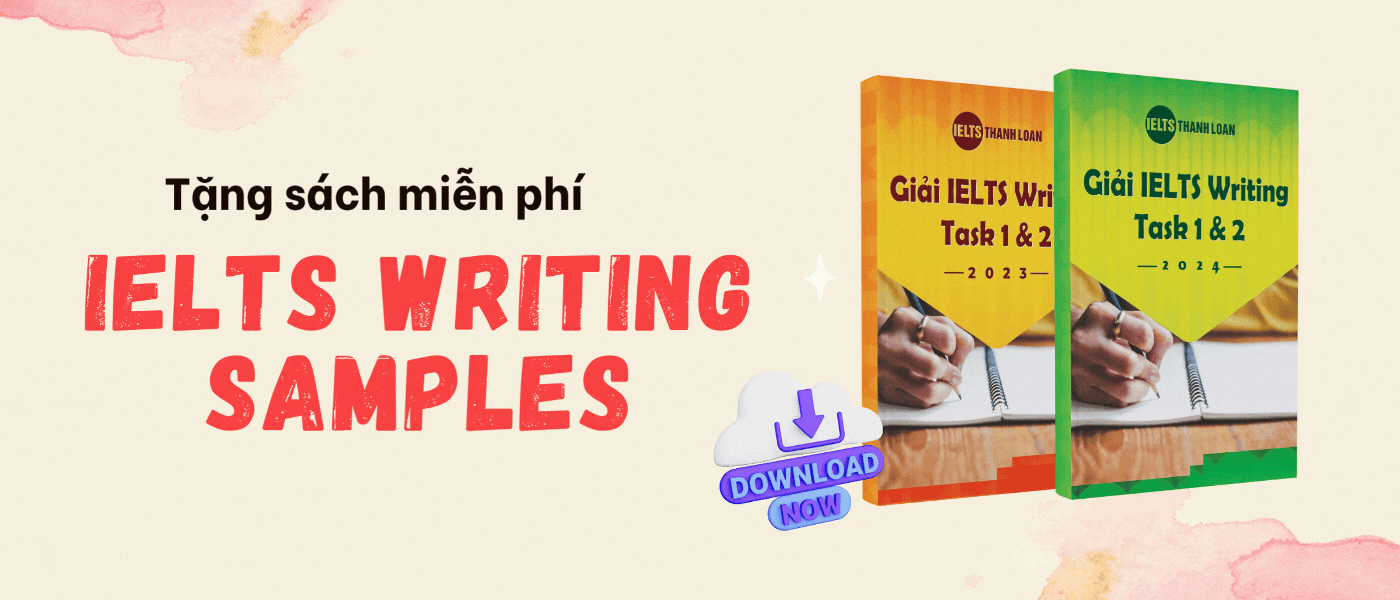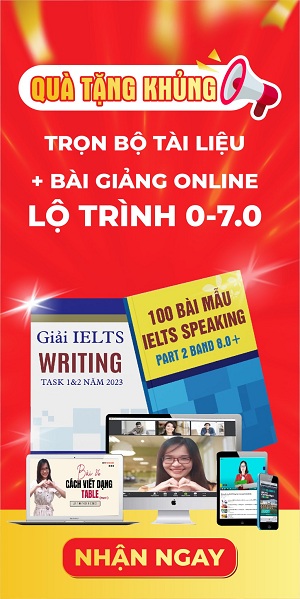The research indicates that nowadays some consumers are less influenced by advertising than in the past. What are the reasons? Is it a positive or negative change? Give reasons for your answer and include any relevant examples from your own experience or knowledgeBài mẫu
In today’s world, advertisements have lessened their impact on consumers. This shift can be attributed to several factors, and from my perspective, this change is positive for both consumers and businesses.
There are two main catalysts for reduced consumer influence by advertisements. The first justification is the sheer volume of advertisements encountered daily. With the rise of digital platforms like YouTube and social media, consumers are constantly bombarded by advertisements, leading to what is commonly referred to as ad fatigue. For instance, when users watch a video online, they are often interrupted by multiple ads which they instinctively skip, reflecting a growing indifference towards advertising. Another contributing factor is negative past experiences with advertised products. Many people have had disappointment when receiving items that were overly hyped or falsely represented in advertisements. Consequently, consumers are now more critical and less likely to be swayed by exaggerated claims made in advertisements.
This shift away from reliance on advertising is beneficial for both buyers and sellers. For consumers, it encourages more thoughtful and informed purchasing decisions. Rather than being impulsively driven by catchy advertisements, buyers take time to evaluate the quality and value of products, rely more on reviews, recommendations, or their own research. This often results in more satisfying and wiser purchases. For businesses, this change encourages a focus on the improvement of product and service quality. Since companies can no longer rely solely on flashy advertising campaigns to boost sales or brand awareness, they are incentivized to ensure that their products meet customer expectations, leading to more sustainable business practices in the long term.
In conclusion, the diminishing influence of advertising on modern consumers is due to overwhelming exposure to advertisements and disappointing buying experiences. This development is beneficial as it promotes better buying decisions and motivates businesses to prioritize product quality over marketing gimmicks.
Từ vựng hay trong bài
- lessen (v): giảm bớt
Giải thích: to make smaller or weaker in degree
Ví dụ: The impact of the campaign lessened over time as interest declined.
- attribute to (v): quy cho
Giải thích: to consider as caused by something
Ví dụ: The success of the product was attributed to its innovative design.
- catalyst (n): chất xúc tác
Giải thích: agents that cause or speed up significant changes or actions
Ví dụ: Social media influencers often act as catalysts for new trends.
- consumer influence (n): sự ảnh hưởng của người tiêu dùng
Giải thích: the power consumers have to affect products and markets
Ví dụ: Consumer influence led the company to change its packaging to be eco-friendly.
- justification (n): sự biện minh
Giải thích: a reason or explanation for an action
Ví dụ: The company’s justification for raising prices was an increase in production costs.
- the sheer volume (n): số lượng khổng lồ
Giải thích: the immense or overwhelming amount of something
Ví dụ: The sheer volume of ads on social media can be overwhelming.
- be bombard with (v): bị dội bom, bủa vây
Giải thích: attacked persistently or overwhelmingly
Ví dụ: Consumers are constantly bombarded with online advertisements.
- ad fatigue (n): sự mệt mỏi với quảng cáo
Giải thích: the weariness or annoyance consumers feel from seeing too many ads
Ví dụ: Frequent exposure to similar ads can lead to ad fatigue.
- instinctively (adv): theo bản năng
Giải thích: to act on natural impulses without conscious thought.
Ví dụ: She instinctively ignored the pop-up ad while browsing.
- indifference (n): sự thờ ơ
Giải thích: lack of interest or concern
Ví dụ: The public’s indifference to the new product led to poor sales.
- overly hyped (adj): bị thổi phồng quá mức
Giải thích: be exaggerated or excessively promoted
Ví dụ: The product was overly hyped but didn’t meet expectations.
- be swayed (v): bị ảnh hưởng, dao động
Giải thích: be influenced or persuaded to change opinion
Ví dụ: Consumers were swayed by the celebrity endorsement in the ad.
- exaggerated claims (n): những tuyên bố phóng đại
Giải thích: statements that overstate the truth or facts
Ví dụ: Exaggerated claims in the ad led to disappointment when the product underperformed.
- informed purchasing decisions (n): quyết định mua hàng sáng suốt
Giải thích: choices made by consumers based on knowledge and research
Ví dụ: Consumers are making more informed purchasing decisions thanks to online reviews.
- be impulsively driven (v): thúc đẩy một cách bốc đồng
Giải thích: be motivated by sudden, unplanned decisions or desires
Ví dụ: Many of her shopping habits are impulsively driven by flash sales.
- evaluate (v): đánh giá
Giải thích: to judge or assess something carefully
Ví dụ: It’s important to evaluate the quality of a product before buying it.
- flashy advertising campaigns (n): các chiến dịch quảng cáo hào nhoáng
Giải thích: marketing strategies that are eye-catching but often superficial
Ví dụ: Flashy advertising campaigns can sometimes overshadow the actual product quality.
- brand awareness (n): nhận thức thương hiệu
Giải thích: the extent to which consumers recognize or remember a brand
Ví dụ: Building brand awareness is key to gaining a competitive edge in the market.
- incentivize (v): khuyến khích, tạo động lực
Giải thích: given motivation or reward to encourage a certain behavior
Ví dụ: Customers were incentivized to purchase through discounts and special offers.
- sustainable business practices (n): các hoạt động kinh doanh bền vững
Giải thích: actions by businesses that consider long-term environmental and social impacts
Ví dụ: The company implemented sustainable business practices to reduce its carbon footprint.
- marketing gimmicks (n): mánh lới quảng cáo
Giải thích: tricks or strategies used to attract attention but often lack substance
Ví dụ: Some marketing gimmicks create temporary buzz but don’t lead to long-term success.
Bạn đang chuẩn bị cho kì thi IELTS?
Hãy tham khảo Khóa Học IELTS Online qua ZOOM cùng cô Thanh Loan
IELTS Thanh Loan – giáo viên 10 năm kinh nghiệm – trực tiếp đứng lớp, tự tin mang đến khóa học chất lượng nhất, phương pháp giảng dạy cô đọng dễ hiểu, giáo trình tự biên soạn cho lộ trình từ cơ bản đến luyện đề chuyên sâu. Đặc biệt, học viên luôn được quan tâm sát sao nhất, hỗ trợ không giới hạn, thúc đẩy kỷ luật học tập tốt để đạt mục tiêu.

Lược dịch tiếng Việt
Trong thế giới ngày nay, quảng cáo đã làm giảm tác động của chúng đối với người tiêu dùng. Sự thay đổi này có thể là do một số yếu tố và theo quan điểm của tôi, sự thay đổi này là tích cực cho cả người tiêu dùng và doanh nghiệp.
Có hai chất xúc tác chính khiến ảnh hưởng của quảng cáo đến người tiêu dùng giảm đi. Lý do đầu tiên là khối lượng lớn quảng cáo xuất hiện hàng ngày. Với sự gia tăng của các nền tảng kỹ thuật số như YouTube và phương tiện truyền thông xã hội, người tiêu dùng liên tục bị tấn công bởi quảng cáo, dẫn đến tình trạng thường được gọi là mệt mỏi với quảng cáo. Ví dụ, khi người dùng xem video trực tuyến, họ thường bị làm phiền bởi nhiều quảng cáo mà theo bản năng họ bỏ qua, phản ánh sự thờ ơ ngày càng tăng đối với quảng cáo. Một yếu tố góp phần khác là những trải nghiệm tiêu cực trong quá khứ với các sản phẩm được quảng cáo. Nhiều người đã thất vọng khi nhận được các mặt hàng được thổi phồng quá mức hoặc được mô tả sai sự thật trong quảng cáo. Do đó, người tiêu dùng hiện nay trở nên khắt khe hơn và ít có khả năng bị ảnh hưởng bởi những tuyên bố phóng đại trong quảng cáo.
Sự thay đổi này khỏi sự phụ thuộc vào quảng cáo có lợi cho cả người mua và người bán. Đối với người tiêu dùng, nó khuyến khích các quyết định mua hàng chu đáo và sáng suốt hơn. Thay vì bị thúc đẩy bởi những quảng cáo hấp dẫn, người mua dành thời gian để đánh giá chất lượng và giá trị của sản phẩm, dựa nhiều hơn vào các bài đánh giá, khuyến nghị hoặc nghiên cứu của riêng họ. Điều này thường dẫn đến việc mua hàng thỏa mãn và sáng suốt hơn. Đối với các doanh nghiệp, sự thay đổi này khuyến khích tập trung vào việc cải thiện chất lượng sản phẩm và dịch vụ. Vì các công ty không còn có thể chỉ dựa vào các chiến dịch quảng cáo hào nhoáng để thúc đẩy doanh số hoặc nhận diện thương hiệu, họ được khuyến khích đảm bảo rằng sản phẩm của mình đáp ứng được kỳ vọng của khách hàng, dẫn đến các hoạt động kinh doanh bền vững hơn trong dài hạn.
Tóm lại, ảnh hưởng ngày càng giảm của quảng cáo đối với người tiêu dùng hiện đại là do tiếp xúc quá nhiều với quảng cáo và trải nghiệm mua hàng đáng thất vọng. Sự phát triển này có lợi vì nó thúc đẩy các quyết định mua hàng tốt hơn và thúc đẩy các doanh nghiệp ưu tiên chất lượng sản phẩm hơn các chiêu trò tiếp thị.
Xem thêm:













